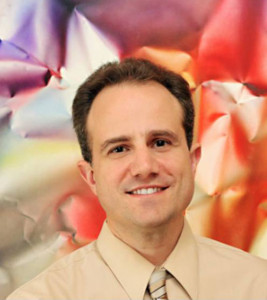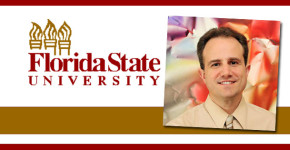
Research from Florida State University might change the way we build and store radioactive waste.
Thomas Albrecht-Schmitt, the Gregory R. Choppin Professor of Chemistry & Biochemistry at Florida State University, is working with atomic element number 98: californium.
Professor Thomas E. Albrecht-Schmitt received his B.S. in chemistry from Southwest Minnesota State University in 1993. He earned his Ph.D. in inorganic chemistry at Northwestern University under the direction of James A. Ibers in 1997. After a short post-doc at the University of Illinois with John R. Shapley, he began his independent career at Auburn University where he rose through the ranks to full professor. He then occupied the Frank M. Freimann Chair at the University of Notre Dame. In 2012, he moved to Florida State University to take on the role of Gregory R. Choppin Chair in Chemistry. His research interests include all aspects of lanthanide and actinide chemistry, materials chemistry, crystallography, and nuclear energy.
Thomas Albrect-Schmitt – The Power of Californium
More than twenty years ago I was walking with my organic chemistry professor through the hills of Trondheim, Norway. I told him, “I want to change how people think about chemistry.” At the time I didn’t know how to do it, or even what area of chemistry I was going to do it in.
For the past sixteen years I have been studying the chemistry of heavy elements like uranium and plutonium.
I was looking for ways to demonstrate that each of these elements was unique and that in order to understand them, you had to work with them directly – no matter how difficult the chemistry is.

About three years ago we decided to transition to the elements beyond plutonium – americium and curium. We had originally resisted this chemistry because it required dedicated facilities, and unlike uranium and plutonium, there are serious radiologic hazards.
Around this time, we also began negotiating with the Department of Energy to obtain the heaviest element in the periodic table that you can do macroscopic chemistry with – Californium.
The particular isotope we needed was very expensive and required years to obtain.
But, it was well worth the wait.
Californium in our system behaved in ways that no one had ever seen before. We actually saw the first strong links between heavy elements and better-known transition metals.
The bonding – the glue that holds chemicals together – in our new californium compound was very atypical.
This dramatically altered nearly every aspect of the properties of californium. In particular, the compound glows green, and when we examined this in detailed we discovered aspects that had never been seen before.
It was very resistant to radiation and was able to bond to other elements that could have major real world application.
While “bonding” may seem to be a very fundamental concept, by controlling it, we can design new chemistry and materials that will help us recycle used nuclear fuel and design advanced materials for safely storing radionuclides.
Read More: Researcher Discovers New Possibilities with Rare Element
